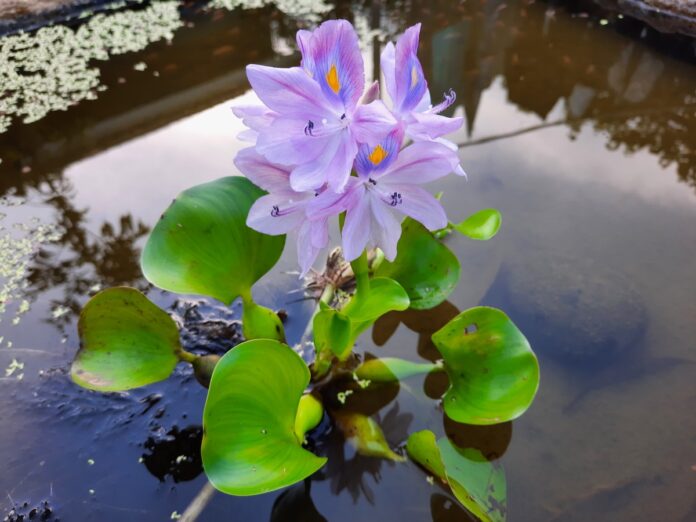“Water Hyacinths: The Surprising Solution to Microplastic Pollution”
In a groundbreaking study published in the journal Environmental Science and Ecotechnology, researchers have discovered that the common water hyacinth, Eichhornia crassipes, has the potential to remediate microplastics in the environment. The study involved collecting water hyacinths from a river in Shanghai, China, and growing them in a controlled greenhouse environment.
During the study, researchers observed that the water hyacinths were able to take up microplastics without any negative impact on their growth. The roots of the plants adsorbed the microplastics from the nutrient solution, with the extensive root system removing 55.3% of the microplastics within 48 hours. Over a period of five days, the roots removed significant percentages of microplastic particles of different sizes.
The researchers noted that the large root caps of water hyacinths make them particularly effective at removing water pollutants like microplastics, with a total surface area exceeding 150,000 square millimeters. While water hyacinths are considered one of the worst aquatic weeds due to their rapid growth and potential to block light and oxygen from reaching native plants and fish, they also offer benefits as bioindicators of pollution levels and filters for removing pollutants like heavy metals from waterways.
The findings of this study suggest that water hyacinths could be utilized for purposes beyond filtering water. The uncontaminated leaves of the plants could be used for biogas generation or as livestock feed, while the nutrient-rich plant material could be composted and used for crop fertilization. The study authors concluded that water hyacinths have the potential to manage complexly polluted water bodies by removing various hazardous substances.
Overall, this research highlights the multifaceted potential of water hyacinths in environmental remediation efforts. By harnessing the natural capabilities of these plants, it may be possible to address the growing issue of microplastic pollution in aquatic ecosystems.
